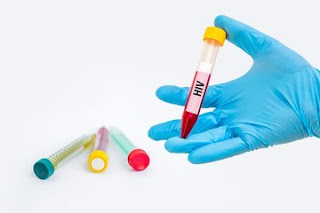A permanent cure for HIV infection remains difficult because the virus can hide in their reservoirs.
Scientists at the Lewis Katz School of Medicine at Temple University (LKSOM) and the University of Pittsburgh show that they can remove HIV DNA from the genomes of living animals to prevent further infection.
They demonstrate that HIV-1 replication can be removed completely and the virus eliminated from infected cells in animals with a powerful gene editing technology known as CRISPR/Cas9.
Previously, scientists used transgenic rat and mouse models with HIV-1 DNA incorporated into the genome of every tissue of the animals’ bodies. They demonstrated that their strategy could delete the targeted fragments of HIV-1 from the genome in most tissues in the experimental animals.
In the new study, the team genetically inactivated HIV-1 in transgenic mice, reducing the RNA expression of viral genes by roughly 60 to 95 percent, confirming their earlier findings. They then tested their system in mice acutely infected with EcoHIV, the mouse equivalent of human HIV-1.
“During acute infection, HIV actively replicates. With EcoHIV mice, scientists were able to investigate the ability of the CRISPR/Cas9 strategy to block viral replication and potentially prevent systemic infection.” The excision efficiency of their strategy reached 96 percent in EcoHIV mice, providing the first evidence for HIV-1 eradication by prophylactic treatment with a CRISPR/Cas9 system.
In the third animal model, latent HIV-1 infection was recapitulated in humanized mice engrafted with human immune cells, including T cells, followed by HIV-1 infection.
“These animals carry latent HIV in the genomes of human T cells, where the virus can escape detection,” Dr. Hu explained. Following a single treatment with CRISPR/Cas9, viral fragments were successfully excised from latently infected human cells embedded in mouse tissues and organs.
In all three animal models, the researchers utilized a recombinant adeno-associated viral (rAAV) vector delivery system based on a subtype known as AAV-DJ/8. “The AAV-DJ/8 subtype combines multiple serotypes, giving us a broader range of cell targets for the delivery of our CRISPR/Cas9 system,”


